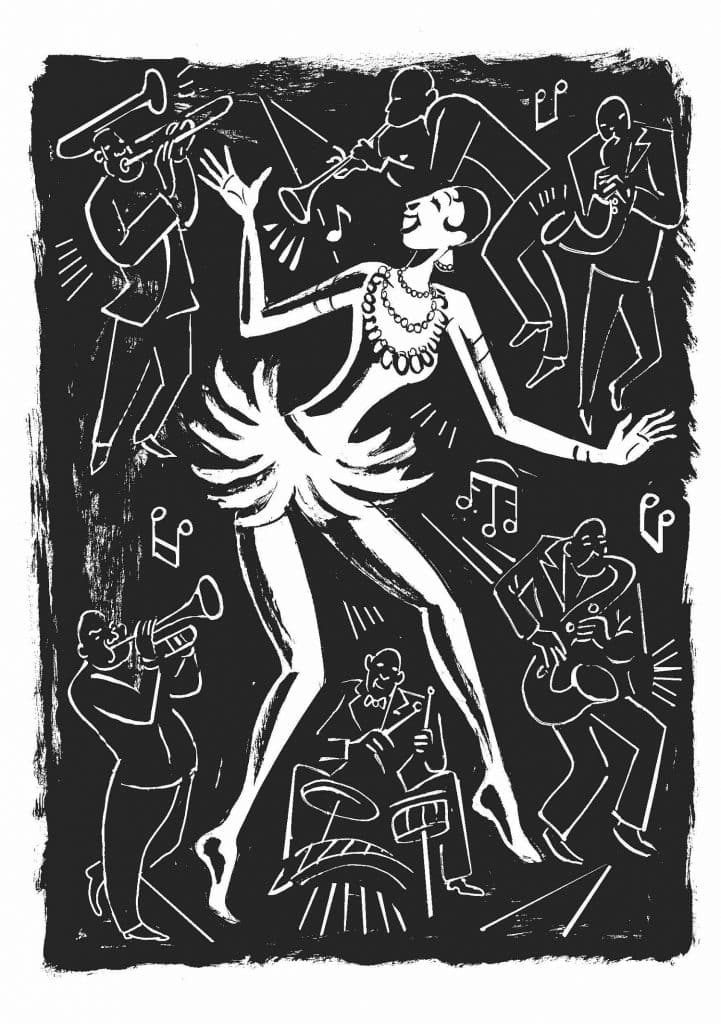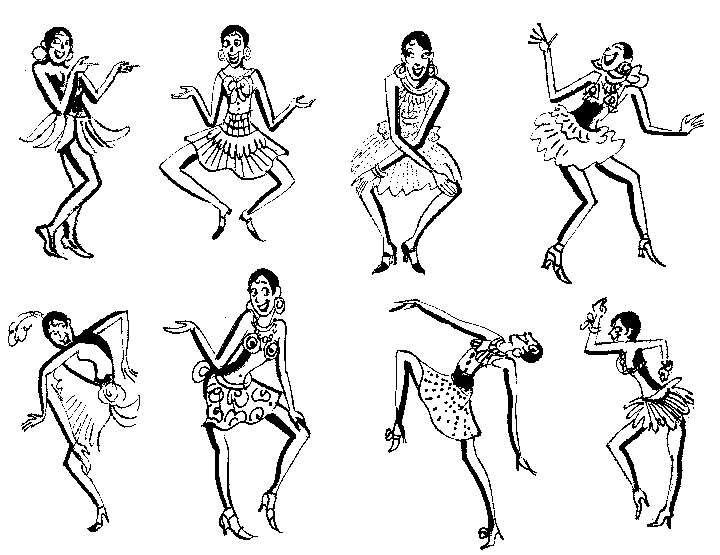afterword by Jean-Claude Bouillon-Baker
translated by Regina López Muñoz
I am not a big fan of biographies, but I’m always prepared to make an exception for a book like this. A monumental graphic biography of Josephine Baker — or Tumpie, as they used to call her as child.

Gabriela Frost wrote in her review:
Catel and Bocquet give an often excessive blow-by-blow of Josephine’s male sexual partners, but fail to mention her relationships with women. This can only be a deliberate exclusion, given the depth of research which must have gone into the graphic novel. Only once is her bisexuality alluded to.
This “only once” refers to pp. 176—179 showing Josephine cuddling up with Ruth Landshoff on a sofa. I am not sure about “deliberate exclusion”. At the end of the book, there are eighty pages (out of 568!) dedicated to biographies of main and secondary characters of the comic*. Reading through them, I could see that the authors were really careful not to bring the unproven relationships — either homo- or heterosexual — into the story. So no affairs with Colette (p. 515) or General de Gaulle (p. 541). Bricktop, most likely. And no Frida Kahlo in sight. Anyway, who needs unsubstantiated gossip describing a life as fantastic as Josephine’s?
For lovers of making-ofs, Catel’s blog has some cute sketches of Josephine.
| * | In order of appearance: Carrie McDonald (Tumpie’s mother), Richard Martin (Tumpie’s brother), Margaret Wallace (Tumpie’s sister), Eubie Blake, Caroline Dudley Reagan (producer of La Revue Nègre), Sidney Bechet, Rolf de Maré, André Daven, Paul Colin, Joe Alex, Mistinguett, Man Ray, Ernest Hemingway, Harry Kessler, Max Reinhardt, Ruth Landshoff, Paul Derval, Bricktop, Giuseppe “Pepito” Abatino (Josephine’s manager and partner), Georges Simenon, Régine “Tigy” Renchon (Simenon’s spouse between 1923 and 1950), Colette, Maurice Dekobra, Henri Étiévant, Mario Nalpas, Luis Buñuel, Pierre Batcheff, Robert Mallet-Stevens, Adolf Loos, Le Corbusier, Henri Varna, Vincent Scotto, Erich Maria Remarque, Albert Willemetz, Sacha Guitry, Marc Allégret, Jean Gabin, Luigi Pirandello, Jean Lion (Josephine’s husband from 1937 to 1940), Jacques Abtey, Si Mohammed Menebhi (brother-in-law of Thami El Glaoui, the Pasha of Marrakesh), Charles de Gaulle, Jo Bouillon, Bessie Allison Buchanan, Grace Kelly, Miki Sawada, Akio Bouillon, Jean-Claude Bouillon-Baker and Brahim-Brian Bouillon-Baker (three of Jo and Jo’s twelve adoptive children), Jocelyne Coffre (Josephine’s secretary between 1962 and 1964), Martin Luther King, Sammy Davis Jr., Brigitte Bardot, Fidel Castro and Jean-Claude Brialy. Bizarrely, the bigraphical details of Joe Alex the actor (p. 498) are conflated with those of (unrelated) Jo Alex the accordionist. The entries for Henri Étiévant and Mario Nalpas (pp. 517—518) appear to be a formerly joint bio of the pair arbitrariliy split in the middle. Otherwise, well-researched and written. |











No comments:
Post a Comment